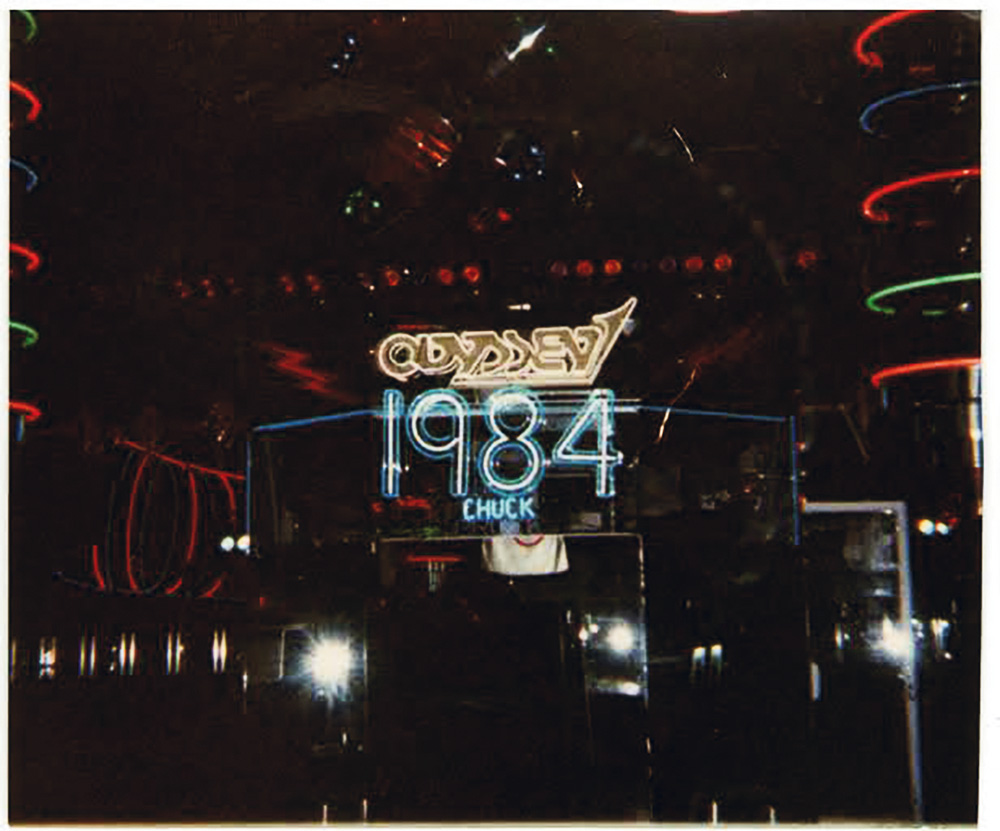The Odyssey
In 1981, Ronald Reagan was sworn in as president, marking the beginning of Republican rule for the next 12 years. While the country was taking a conservative tack, the last flickering moments of sexual freedom burned bright. That was the year that I discovered a now-iconic gay-friendly, all-ages dance club called Odyssey 1 in Los Angeles.
I was a closeted 16-year-old growing up in the laid-back beach town of Ventura, a place dominated by surf rats conquering the waves and skateboarders carving out empty swimming pools. Nevertheless, it was still a place where you got your ass kicked if you were suspected of being gay. That spring a straight friend and I were perusing the L.A. Weekly concert guide when I quietly noticed an ad for a gay and lesbian hotline. Later that night, I found the courage to call the number. A man with a heavy lisp offered me only one solution: “The Odyssey 1 nightclub.” He claimed it was the perfect place to dance my troubles away among other teens with the same questions about their sexuality. He was even kind enough to give detailed driving directions to the club’s doorstep, on Beverly and La Cienega boulevards.
The following Friday I offered a convenient lie to my parents, borrowed their ’69 Mustang, and hopped on the 101 Freeway for the hour-long drive to Hollywood. When I arrived, I felt like Dorothy landing in Oz, my mind immediately blown by the music and complex lighting.
The Odyssey 1 opened its doors in the summer of 1976 with the enlisted talent of Chuck E. Starr, a local DJ who saved all our lives. By 1981 the no-alcohol club was entering its most popular and liberating years, offering a safety zone for teen bliss and experimentation seven nights a week. Beneath the DJ booth lay a vibrating dance floor filled with the most exotic and stylish kids I’d ever encountered, all dancing expressively to the music that pumped from the insane sound system. Starr’s mixes were elaborately eclectic, with sets that might include Nina Hagen, Tom Tom Club, Devo, Berlin, the S.O.S. Band, Yaz, B-Movie, Depeche Mode, New Order, the B-52’s, X, and Madonna.
In 1982 other kids from Ventura discovered my secret spot. I didn’t want my cover blown, so I pretended to enter this world with them for the first time. For the next few years Odyssey became a place to lose ourselves, explore our identities, and, for some, create nightlife alter egos. While the club did attract young Hollywood stars, it never really mattered where you came from. What made you unique were your dance moves and the attitude you brought to the floor.
By the middle of the decade, the mood of the country had shifted dramatically: Nancy Reagan’s “Just Say No” campaign had permeated the culture, and some of the kids from the club would be the first to personalize AIDS for us. Area residents, tired of Odyssey’s late hours and the young patrons’ excess and abandon, fought to shut down our safe haven. And then on March 29, 1985, more than a month after the club’s dance permit had been revoked, the Odyssey was set ablaze under mysterious circumstances and never reopened. We felt heartbroken, and yet those glittering Odyssey nights cemented the soundtrack of our outrageous, optimistic, and briefly unified youth, and gave gay kids a first taste of acceptance.
CHRIS BRENNER HAS MANAGED THE ADVERTISING CAREER OF MILLA JOVOVICH FOR 20 YEARS. HE IS CURRENTLY FOCUSING ON SCREENWRITING AND PRODUCING, AND IS DEVELOPING THE ODYSSEY AS A CABLE SERIES WITH MS. JOVOVICH.







